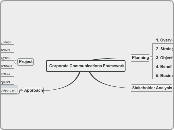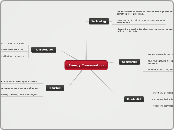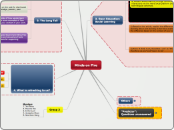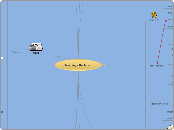Solutions to the Water pollution in Town X
What is Jeremy's email? I am having problems...
lalala
Researchers at the USDA Forest
Service, Forest Products Laboratory (FPL) have
developed a filter system made from wood and woodbased
fiber that is showing great promise in cleaning
contaminants from water.
The filters are made from different types of readily
available wood material and other agricultural
materials. These filters are not only showing promise
in cleaning phosphates and nutrients from agricultural
runoff, they are also being tested in cleaning acidic
heavy metals from acid mine discharge (AMD), pesticides
and phosphates from cranberry production, and
oils and other contaminants from nonpoint source pollution
such as runoff from highways, parking lots, and
urban areas. And, these filters are available, inexpensive,
recyclable, biodegradable, and sustainable
Solution 3: Finding other Sources of Clean Water
Singapore's way
Singapore's first reservoir was the MacRitchie reservoir, which was built by the British in 1867. Subsequently, as Singapore developed into a modern city, more sources of water were needed to sustain the city’s growth. Thus two local reservoirs were added to the rapidly modernising colonial city. After independence in 1965, the Public Utilities Board took over the control of basic supplies including water. From then on, there have been many developments and improvements to increase the water supply for Singapore. The 1960s and 1970s saw great development for Singapore. In order to maintain that, many big water projects were embarked upon to increase the water supply. Examples of these projects included the Kranji-Pandan Scheme, the Upper Pierce Project and the Western Catchment Water Scheme.
In 2001 the Public Utilities Board, which had previously been in charge of water supply only, was given the responsibility for sanitation as well which had previously been directly provided by the Ministry of Environment. The change facilitated the implementation of an integrated water management approach. In 2002 Singapore inaugurated its first reclaimed water plant after a monitoring period of two years to ensure safe water quality. In 2005 it opened its first desalination plant. By the time the long-term water supply agreement with Malaysia expires in 2061, Singapore wants to be self-sufficient in terms of water supply, with reclaimed water meeting 40% and desalination 30% of its needs in addition to the 20% supplied by internal catchments.
[edit] Water sourcesThe water resources of Singapore are especially precious given the small amount of land and territory in Singapore's geography while having a large urban population in the city-state. Without natural freshwater lakes, Singapore relies on four water sources:
rainfall, collected in reservoirs or water catchment areas (about 20% of supply in 2010),
Imported water from Malaysia (about 40% of supply),
Reclaimed water (producing NEWater) (30% of supply), and
Seawater desalination (10% of supply).
This "four tap" strategy aims to reduce reliance on supply from Malaysia by increasing the volume supplied from the three other sources, or "national taps".
Other Possible Solutions
Government Actions/Law Enforcement
Sue the Company
Banning the Company from disposing unwanted detergents and waste chemiclals etc.
The "Physical" Way
Warnings
Confronting the company manager about the issue of unclean water
Asking the factory to make use of the waste by recycling it rather than polluting the clean water for living things
Singapore has two separate systems to collect rainwater and used water. Rainwater is collected through a comprehensive network of drains, canals, rivers, storm-water collection ponds and reservoirs before it is treated for drinking water supply. This makes Singapore one of the few countries in the world to harvest urban storm-water on a large-scale for its water supply.
Local catchment water is a pillar of our sustainable water supply. By 2011, two-thirds of Singapore’s land areas become water catchment including Marina, Punggol and Serangoon Reservoirs and their catchments.
With all the major estuaries already dammed to create reservoirs, PUB aims to harness water from the remaining streams and rivulets near the shoreline using technology that can treat water of varying salinity. This will boost Singapore’s water catchment area to 90% by 2060.
Source: http://www.pub.gov.sg/water/Pages/singaporewaterstory.aspx
Solution 1: Treating the Affected Water before Allowing the People to Drink it.
Removing Contaminants Using Wood Fiber Filters
Desalinated Water
How it Works (Example: Singapore's System)
Another technology-based water source is desalinated water. Singapore has one of Asia’s largest seawater reverse-osmosis plant, which produces 30 million gallons of water a day (136,000 cubic metres) to meet about 10% of Singapore’s water needs. The second 70mgd desalinated plant will be completed in 2013.
By 2060, we intend to ramp up desalination capacity by almost 10 times so that desalinated water will meet at least 30% of our water demand in the long term.
Multiple water projects were also initiated to ensure a sustainable water supply for Singapore. These include clean-up of the Singapore River, building the Marina Barrage and creating the Deep Tunnel Sewerage System
Source:http://www.pub.gov.sg/water
The NEWater Method (by Singapore)
A Singapore success story and the pillar of Singapore’s water sustainability, NEWater is high-grade reclaimed water produced from treated used water that is further purified using advanced membrane technologies and ultra-violet disinfection, making it ultra-clean and safe to drink.
In 2011, Singapore’s latest and largest NEWater plant was completed. This plant together with the expansion of the existing four NEWater plants can meet 30% of the nation’s water needs.
By 2060, we plan to triple the current NEWater capacity so that NEWater can meet 50% of our future water demand.
Source: http://www.pub.gov.sg/water/Pages/singaporewaterstory.aspx
Solution 2: Factory Treating the Chemicals to be Disposed before Discharging the
The Factory can dillute the chemicals (or unwanted detergents) to be disposed with water and then either...
Just release the diluted waste
Treat the water before dispatching it into the nearby river to prevent the residents drinking it to fall sick and the crops in the agricutural area destroyed









